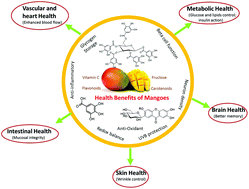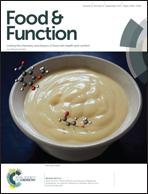Mangos and their bioactive components: adding variety to the fruit plate for health
Abstract
The diet is an essential factor affecting the risk for development and progression of modern day chronic diseases, particularly those with pathophysiological roots in inflammation and oxidative stress-induced damage. The potential impact of certain foods and their bioactive compounds to reverse or prevent destructive dysregulated processes leading to disease has attracted intense research attention. The mango (Mangifera indica Linn.) is a tropical fruit with distinctive nutritional and phytochemical composition. Notably, the mango contains several essential water- and lipid-soluble micronutrients along with the distinguishing phytochemicals gallotannins and mangiferin. In vitro and in vivo studies reveal various mechanisms through which mangos or their associated compounds reduce risk or reverse metabolic- and inflammation-associated diseases. Health benefits of isolated individual mango compounds and extracts from mango by-products are well described in the literature with less attention devoted to the whole fruit. Here, we review and summarize the available literature assessing the health promoting potential of mango flesh, the edible portion contributing to dietary fruit intake, focusing specifically on modern day health issues of obesity and the risk factors and diseases it precipitates, including diabetes and cardiovascular disease. Additionally, this review explores new insights on the benefits of mango for brain, skin and intestinal health. Overall, the foundation of research supporting the potential role of mangos in reducing risk for inflammation- and metabolically-based chronic diseases is growing.



 Please wait while we load your content...
Please wait while we load your content...